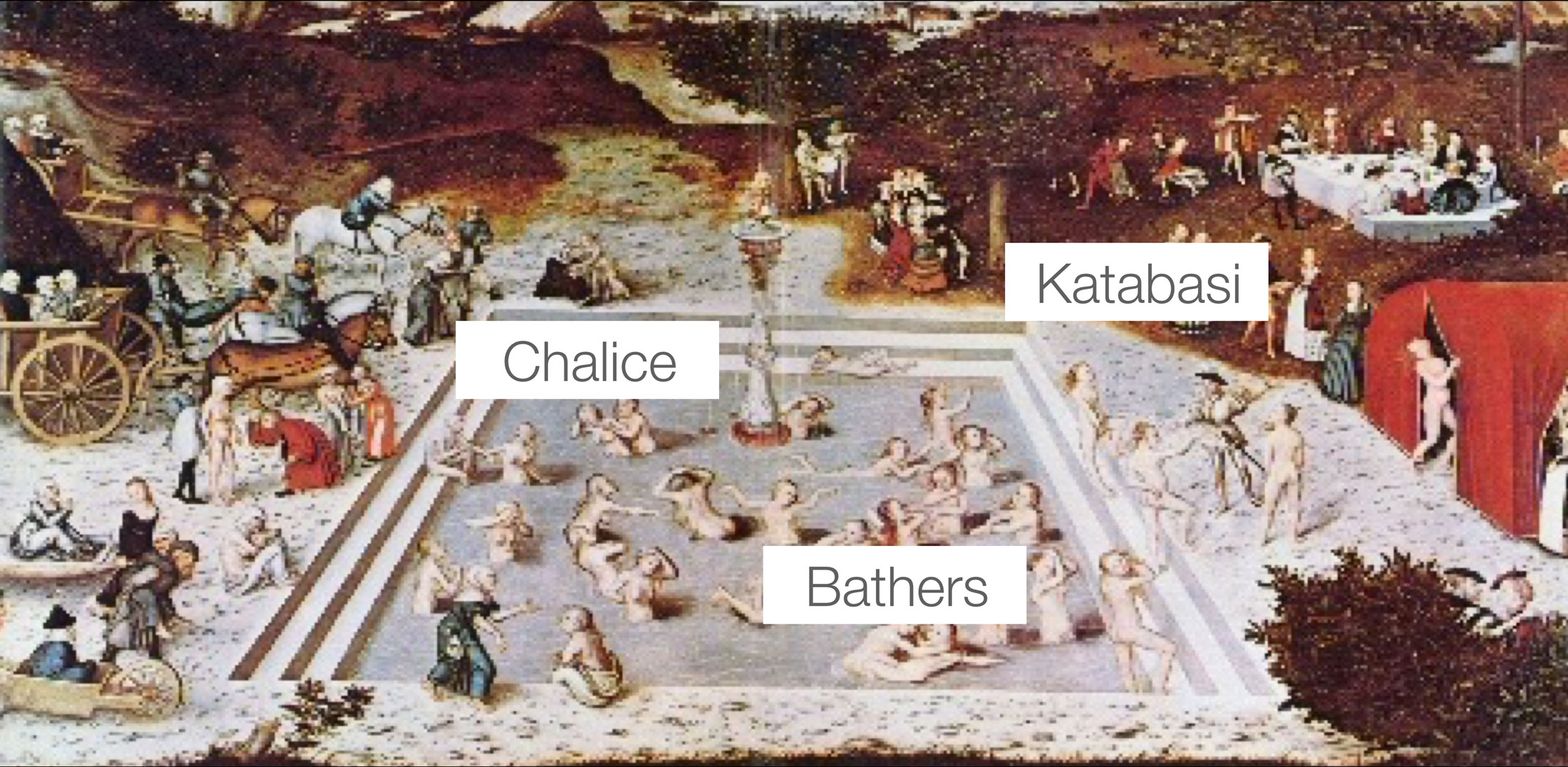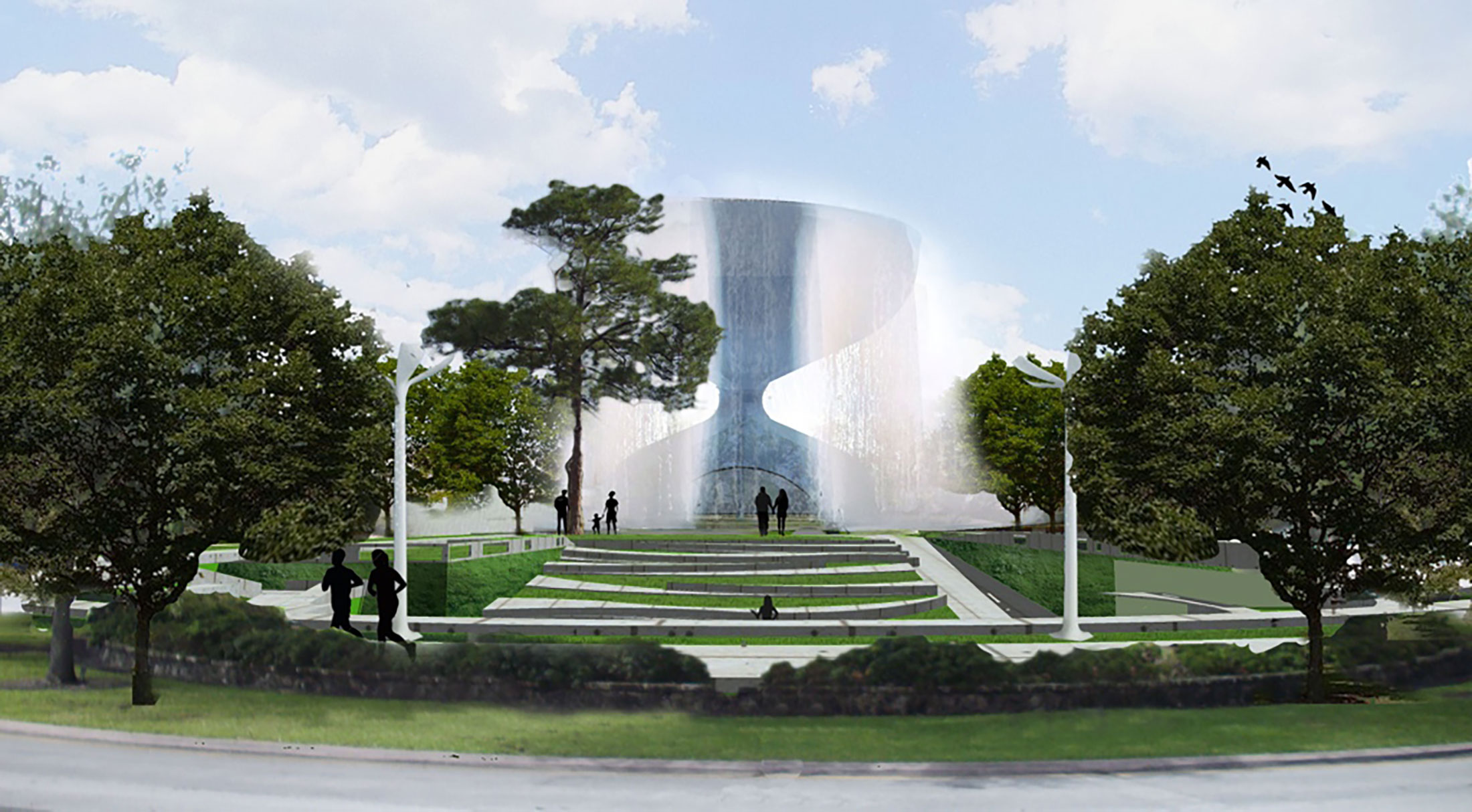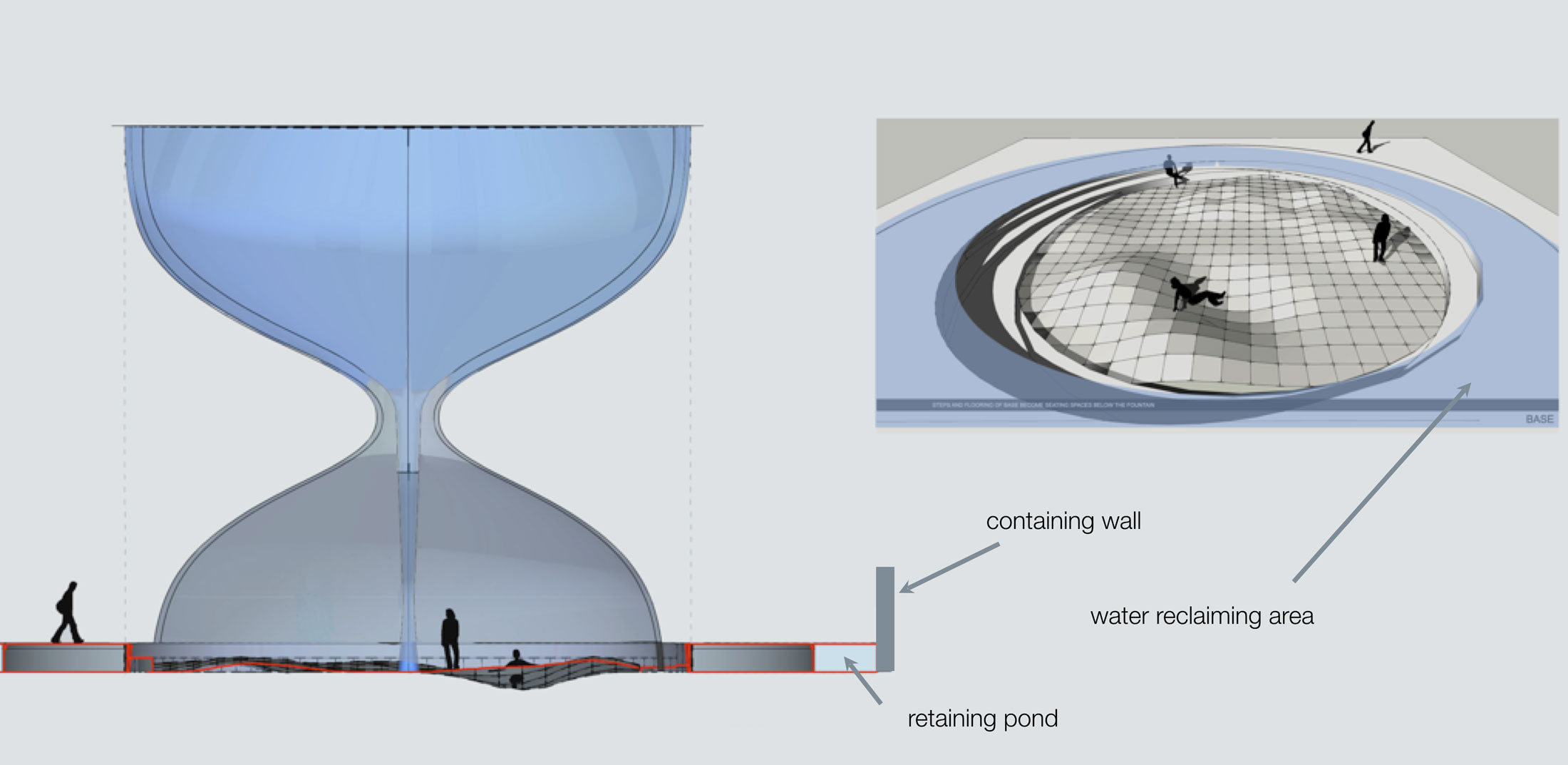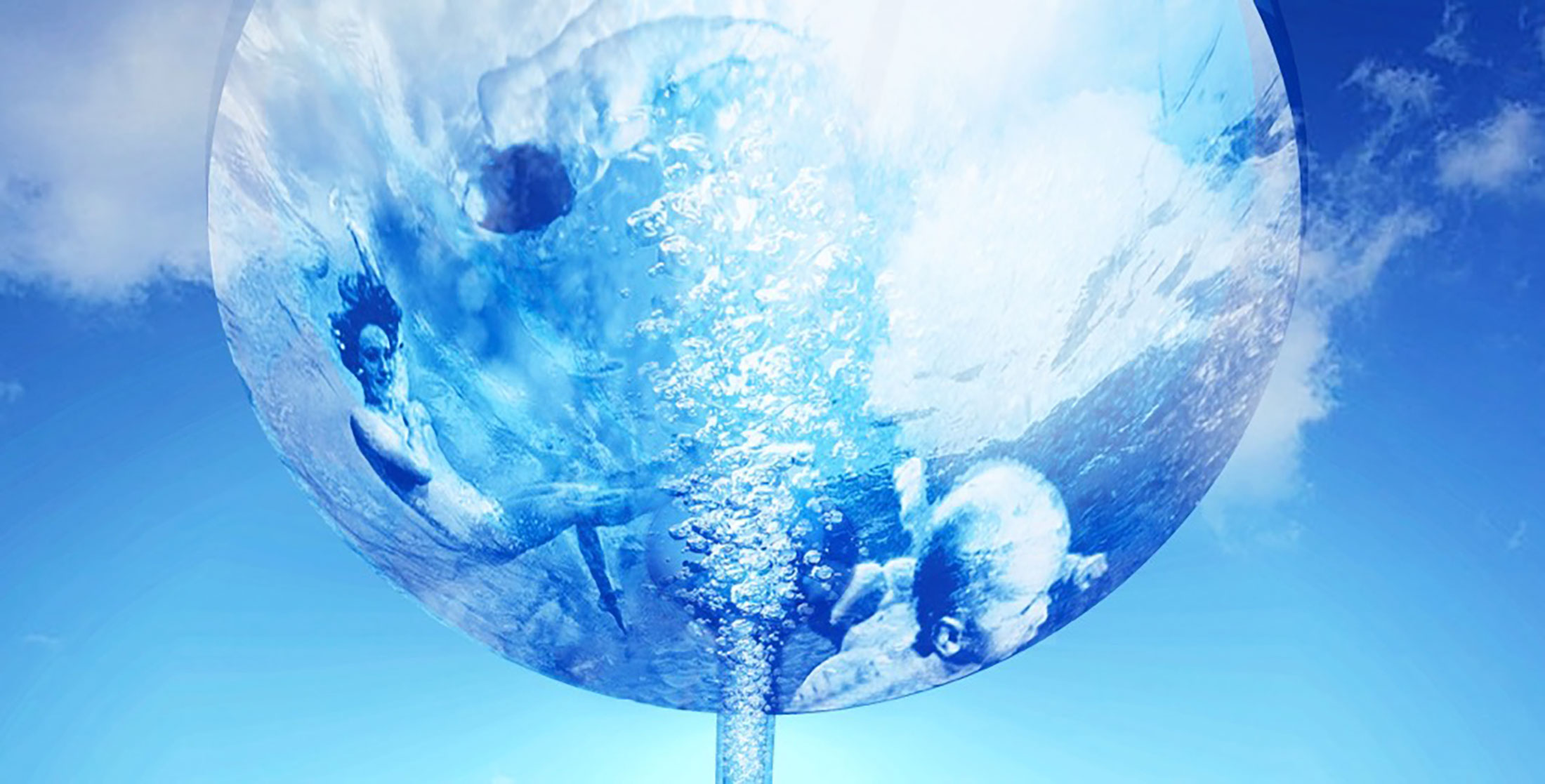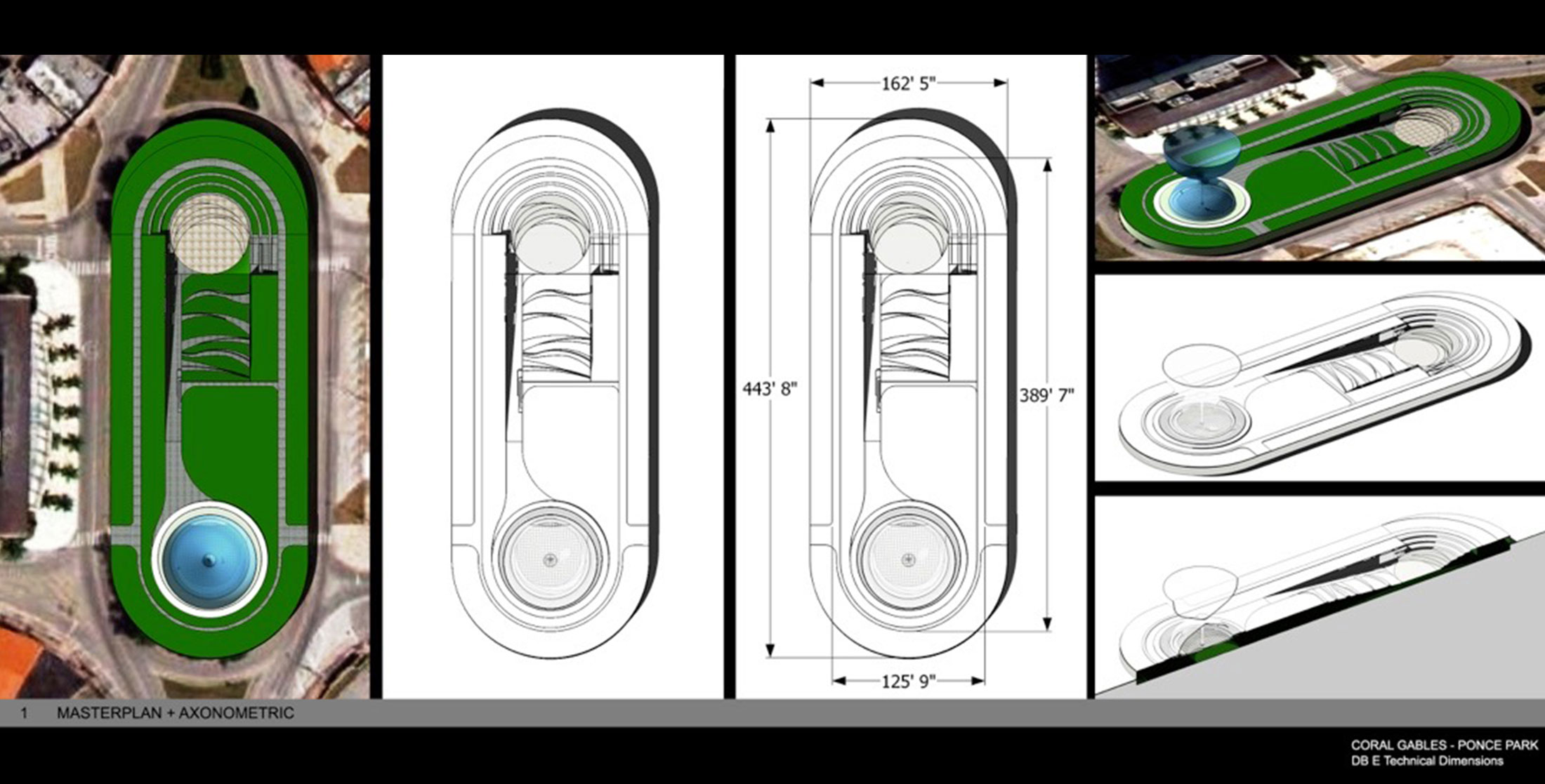THE FOUNTAIN OF YOUTH A Mixed Media Extravaganza
In 2011, Vito Di Bari was asked to design a landmark to commemorate the discovery of the Fountain of Youth, by the Spanish explorer Juan Ponce De Leon, in Florida. The landmark was to be built within Ponce Circle Park, in the City of Coral Gables. As with all of his projects, Di Bari wanted to create something that would be memorable, a spectacle attracting people far and wide. He saw it fitting that the landmark be an actual fountain, representing the fountain discovered by the Spanish explorer, and the result was an extraordinary display of a sleek design harmonizing with hidden technologies.
As the legend goes, the Fountain of Youth is a spring whose waters possess regenerative powers. If consumed or bathed in, the waters were rejuvenating, curing wounds and capable of making the elderly young, strong and fertile again. He chose the shape of the fountain to be an hourglass, a reference to an iconic symbol of time. In this case, “time” is magically reversing as the fountain rejuvenates the bathers.
Tales of such a fountain have been told around the world for thousands of years, appearing in writings by Herodotus (5th century BC), the Alexander romance (3rd century AD), and the stories of Prester John (early Crusades, 11th/12th centuries AD).
It is said by some that the explorer Juan Ponce de Leon dedicated his whole life to the search for the Fountain of Youth and that by seeking it he found Florida. Official credit for finding Florida goes to Juan Ponce de Leon because his voyage in 1513 was officially sanctioned by Spain. As the story goes, he is attributed with finding the Fountain of Youth in an unspecified area of Florida in 1523. The cartographers of the time narrate that the discovery of the fountain occurred with the passage through “the dark lands”, a journey across an impassable mountain, finally reaching a remote island. Others still, speak of passages through impervious woods to get to the spring.
The story of the Fountain of Youth was further spread and propagated all over the world thanks to this painting by the artist Lucas Cranach.
Vito Di Bari’s vision for the fountain started with this painting as it was the most popular and widely accepted depiction of the Fountain of Youth just after the time Ponce de Leon would have discovered it (1546). There are three main elements maintained in Di Bari’s design that were inspired by this painting: the chalice, the katabasis, and the bathers.
In many baths an ornamental piece, called the ‘chalice’, was located at the center to disperse the waters from the natural springs below. This is where Di Bari drew inspiration in designing the fountain. He intended for his fountain to be viewed as a giant chalice dispersing the rejuvenating waters in a steady trickle over the brim.
Katabasis means to descend, or step downward, in search of awareness. This descension is the three steps downward it takes to reach the water below. Patrons may enter the base to enjoy shade from the Florida sun, as well as a light mist enhancing the space to offer a cooled, refreshing and relaxing atmosphere. Seating space made up of blue mosaic tiles laid over an undulating surface, gives the effect of water, paying homage to the water surrounding the chalice in Cranach’s painting.
With Di Bari’s fountain, the ‘bathers’ (patrons visiting) enter the base to see, at the center, cylindrical glass encasing a steady stream of bubbles. As their eyes follow the stream upward through the hourglass-shaped fountain, they see the bubbles eventually forming playful bodies of young bathers chasing each other. These images of additional bathers being rejuvenated is made possible by cutting-edge projections upon the upper dome of the fountain, visible from the inside of the lower dome.
“I love your creative ideas, the metaphorical imagery, the visual boldness and the unique approach.”
[W. Allen Morris – Chairman & CEO, The Allen Morris Company]
(about Vito Di Bari’s Ponce Circle Park/Fountain of Youth Project)
To represent the story of Ponce De Leon discovering the Fountain of Youth, many different features and technologies are included in the design, with the most elusive being motion sensors that detect when someone is approaching the fountain. As the story goes, the passage to the Fountain of Youth had an obscure entrance, so Di Bari made sure to represent this as well. As patrons approach the fountain, the trickling water falling down stops, just in front of the entrance, to allow for them to enter the lower dome of the fountain. Moreover, LED lights allow for the water to flow in different colors, further adding an enchanting effect.
“I think you have done well to capture the essence of what is most special about the history of our City”
[Mark A. Trowbridge – President and CEO, Coral Gables Chamber of Commerce]
(about Vito Di Bari’s Ponce Circle Park/Fountain of Youth Project)
The ‘architect’ of Coral Gables, George E. Merrick, had a dream to create a master suburb adjacent to the City of Miami in the 1920‘s. He wanted to create a place, a ‘most beautiful city’, with an exquisite style of its own. He envisioned a location with a Mediterranean Revival style, lush gardens, and beautiful plazas and entrances. The result was a city that is Spanish-influenced in the style and architecture of its buildings. The names of streets, buildings, entryways to the city, and parks all bear inspiration of the Spanish culture.
To complete the park, Vito Di Bari decided to redesign an existing amphitheater area opposite the fountain, in Ponce Circle Park. Staying consistent with the Spanish theme throughout Coral Gables, Di Bari used mosaic patterns of the Alhambra in Granada to line the ‘stage’ floor. The natural downward south-to-north sloping of the park allows for seating facing the amphitheater to be placed. The design of the fountain, coupled with the usable space at the other end of the park, provide a beautiful makeover to an underutilized space in Coral Gables. This design pays homage to a unique and magical story, while at the same time providing a more useful space for patrons and citizens of Coral Gables.

